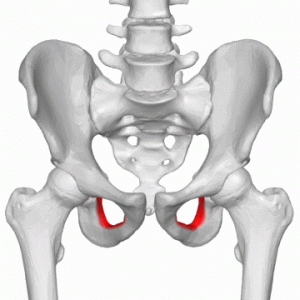An infected groin prevents using the femoral artery as a target for revascularization. In these cases, when revascularization of the femoral artery is needed, an ilio-popliteal bypass through the obturator foramen is a decent solution.
A 37-year-old man was admitted due to severe bleeding from his left groin. He was an intravenous drug user (IVDU), and the bleeding was on and off for about one week before his admission. A CT scan showed an infected pseudoaneurysm on the left femoral artery bifurcation.
The patient was transferred immediately to the theater. A femoral artery ligation was performed to control the hemorrhage. Common femoral, profunda femoral, and superficial femoral arteries were ligated. A local bypass at the groin was not chosen due to the existing infection of the area. After the procedure, severe ischemia of the foot was noticed. A decision for an iliac-popliteal bypass through the obturator foramen was made.
Technical notes regarding this type of bypass:
- Surgical exposure of the iliac bifurcation can be made through a retroperitoneal approach. The exposure must be quite low into the pelvis to recognize the obturator foramen. The obturator foramen can be recognized by freeing up the extraperitoneal plane distally down over the pelvic rim and looking downward. The bladder must be mobilized as medially as possible. The surgeon must first identify the anterior iliac spine to recognize the foramen. Following the bone edge with his finger, the horizontal part of the pubic bone and the pubic crest can be felt. The obturator foramen is just under this bony structure. The foramen can be felt to be closed due to the existence of muscles (obturator externus muscle) and dense fascia (obturator membrane). Try to feel the central part of the foramen. You feel a strong resistance to this point due to the underlying muscle. Try to get through the muscle. Stay away from the supero-medial corner of the foramen where the obturator vessels and the nerve go through. This is where the graft ideally should not go through. In any case, this is a relatively free space of any serious structure thus it is overall safe to go through with a tunneler
- The exposure of the popliteal artery is with the standard medial approach to the above knee part of the artery. The adductors muscle are recognized, and the hip and thigh are externally rotated. A curved tunneler is inserted under the adductors muscles toward the obturator foramen. Having a finger on the obturator foramen while pushing the tunneler upwards, the surgeon can feel the tip of the tunneler on his fingertip.

